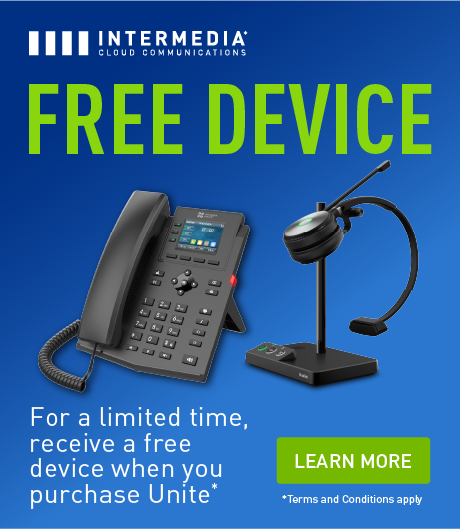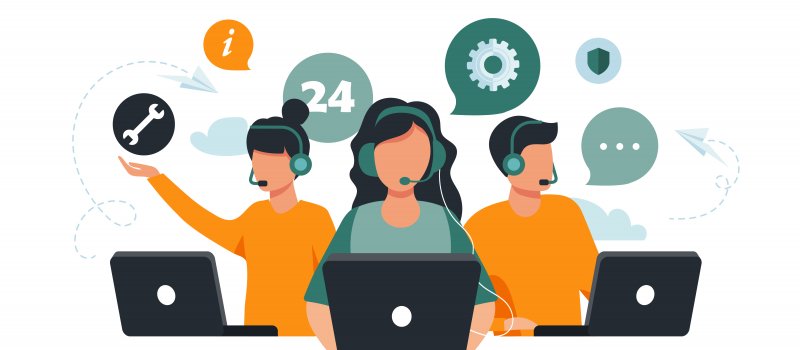In today’s fast-paced world, relaying messages quickly is crucial, especially in business. For business owners or managers, one way to enhance communication in the workplace is by identifying and employing appropriate channels. These channels refer to how employees interact and share information, including emails, video chats, etc.
Most organizations have business communication channels, but if they’re not managed properly, they won’t be as effective. Intermedia provides intelligent tools like unified communications to help businesses communicate effectively. Here, we discuss channels of communication in the workplace and their benefits.
Understanding Communication Channels in Organizations
Regardless of the type of workplace, it’s crucial to communicate and transmit information to workers. Communication is essential for assigning tasks, expressing company goals, collaborating on projects, fostering company culture, and more. Channels of communication are most effective when they are clear, efficient, and interactive. To determine the best communication channels for a business, it helps to understand the different types:
Verbal: Passing information orally, such as face-to-face, via telephone, or in conference calls.
Non-verbal: Communicating through body language, facial expressions, eye contact, and gestures.
Written: Using printed or handwritten messages like memos, plans, notes, and documents.
Digital: Leveraging technology like video calls, emails, social media, instant messaging, and text messaging.
Most businesses use a mix of these channels. When selecting communication methods, consider what makes the most sense for your workforce. For example, in-office memos are ineffective for remote workers, and messaging apps requiring strong cell service won’t work for frequently traveling employees. The best channels for real-time updates are those that are reliable and instantaneous.
Importance of Communication Channels in the Workplace
Effective communication channels prevent confusion about duties and expectations, reduced production, and customer frustration, which can lead to decreased sales. They also offer benefits like:
Enhancing Collaboration
When employees have access to efficient communication channels, they can work together more seamlessly, making collaboration easier and more efficient. Better collaboration can also make work more enjoyable for employees as they can form relationships with coworkers. It can also help employees improve their communication skills overall.
Boosting Productivity
Efficient communication channels help eliminate confusing or incomplete communications so employees can receive updates and assignments quickly. When there’s a clear communication process, employees know what they need to do, and it leads to more efficient and productive work.
Facilitating Information Flow
Efficient channels of communication in the workplace allow employees to quickly share information, new ideas, and quick thoughts. This enhanced information flow can help increase collaboration, teamwork, problem-solving, and innovation.
Reducing Misunderstandings
Using communication channels to evoke company goals and expectations helps employees know what is expected of them — decreasing misunderstandings. They can also help reduce conflicts in the workplace because employees can have open communication.
Effective channels of communication in the workplace offer several benefits, so businesses should make sure their employees have access to them.
Communication Channels in Organizations Formalities
Along with the four main types of communication channels (verbal, non-verbal, written, and digital), there are three kinds of formalities into which these internal communication channels can fall. They include:
Formal Communication Channels
Formal communication in the workplace consists of sharing company information like goals, policies, expectations, strategies, updates, etc. This type of communication generally follows standard writing guidelines, has a professional tone, and is sent company-wide. They help provide a clear flow of information, establish an organizational hierarchy and culture, share company news, and maintain a professional image.
Some common examples of formal communication channels include:
- Memos
- Emails
- Business letters
- Reports
- Presentations
- Meeting recordings
Formal communication channels should reach all intended recipients promptly. They are most often in written form so they can also be used for legal purposes and future reference.
Informal Communication Channels
Informal communication in an organization refers to information exchange outside of formal communication channels like meetings, emails, and memos. Informal communication channels are more casual, don’t have to follow strict grammar and etiquette standards, and are more free-flowing. Some examples include:
- Chit-chat between colleagues
- Watercooler or lunchtime discussions
- Informal team meetings
- Social media or instant messaging interactions
- Team-building activities
Informal communication is most often done face-to-face but can also be used in digital forms. Unlike formal communication, informal communication doesn’t have to include the whole organization — it can be between only one or two people, a specific team, or a small group of team members. Informal communication channels are important for fostering stronger relationships between colleagues where people feel free to share ideas, personal stories, and experiences. This can lead to an enhanced work culture and better employee engagement.
Unofficial Communication Channels
Unofficial communication in the workplace is sharing information that does not relate to work in any way. It can include lunchtime conversations, gossip about coworkers, sharing personal plans and stories, and talking with colleagues outside of work about non-work-related topics. Unofficial communication can be done through various channel types, including:
- Verbal channels like in-person conversations or phone calls
- Digital channels like texts, instant messages, or interactions on social media platforms
- Written channels like notes
The type of formality used will often depend on whether the information is presented via downward or upward communication, meaning it’s coming from the top of the chain of command to the bottom and vice versa. Memos and company news come from the top down and are formal, while employee feedback and grievances go from the bottom up and are generally less formal. It’s important to choose the right communication channels depending on what the message is and who is sending it, whether that is face-to-face conversations or emails.
Digital Communication Channels: The Future of Workplace Communication
In the modern workplace, digital communication channels are widely used to help employees effectively transmit information and stay connected. These channels are often quick, easy to use, and accessible. However, conveying the tone or purpose of a conversation over digital channels can be challenging, potentially leading to miscommunication. Therefore, it’s important to be extra clear when using digital channels, as they are here to stay. Some common examples of digital communication channels in the workplace include:
Emails are one of the most popular digital communication channels in the workplace due to their familiarity, cost-effectiveness, and dependability. Emails can deliver information to individuals or the entire company and can support a wide range of files or attachments. However, emails are not ideal for time-sensitive messages. Although they are delivered quickly, getting a response can take hours or even days. They are best for relaying non-urgent information.
Instant Messaging Platforms
Instant messaging platforms like Skype, Microsoft Teams, and Slack have greatly increased in workplace popularity. These apps allow users to quickly send messages to individuals or groups, making them ideal for communicating with separate teams. They provide notifications when a user receives a message and can be accessed on computers or mobile devices. These platforms often back up to the cloud, allowing conversations to be archived for later reference. However, instant messaging platforms are not ideal for organizational communication involving the entire workforce.
Video Conferencing Tools
Video conferencing tools like Zoom, Teams, or Intermedia’s AnyMeeting are another commonly used digital communication channel in the workplace. These platforms combine digital, verbal, and nonverbal communication to provide enhanced interaction and clarity. They are ideal for keeping a remote workforce connected or for connecting traveling employees. By connecting employees in different areas, video conference platforms help increase collaboration while reducing travel times and expenses. These tools often have additional features like call recording or screen sharing, which are beneficial for remote work. However, video conferencing tools require a solid internet connection or cellular service and can experience technical difficulties that interrupt meetings.
Unified Communication Platforms
One digital channel that is also increasing in popularity is unified communication platforms. These platforms bring together separate channels like voice, video, messaging, etc. into one platform to provide an efficient experience with increased productivity and collaboration. Having all a business’s communication channels on one platform can also decrease the costs of multiple subscriptions.
At Intermedia, we offer organizations Intermedia Unite, which is an all-in-one cloud communications solution system that unifies their communication channels seamlessly. Our Unified Communications as a Solution (UCaaS) benefits businesses with:
- Increased productivity
- Enhanced customer interactions
- Reduced costs
- Scalability
These benefits are why more and more workplaces are choosing unified communication platforms for their communication channel, along with other digital channels.
The type of formality used will often depend on whether the information is presented via downward or upward communication, meaning it’s coming from the top of the chain of command to the bottom or the opposite. And the formality will dictate the methods of communication, with some more formal than others. It’s important to choose the right communication channels depending on the contents of the message and the sender/recipient. This is true for in-person and digital communication.
Invest in Your Workplace Communication with Intermedia
If you own or manage a business, consider enhancing your workplace communication by investing in unified communications from Intermedia. Our system lets you and your employees communicate how you want and wherever you are to boost productivity, employee engagement, and efficiency. For more information about intelligent tools from Intermedia, get a quote today.
October 3, 2024
Explore other posts on these topics: Unified Communications






